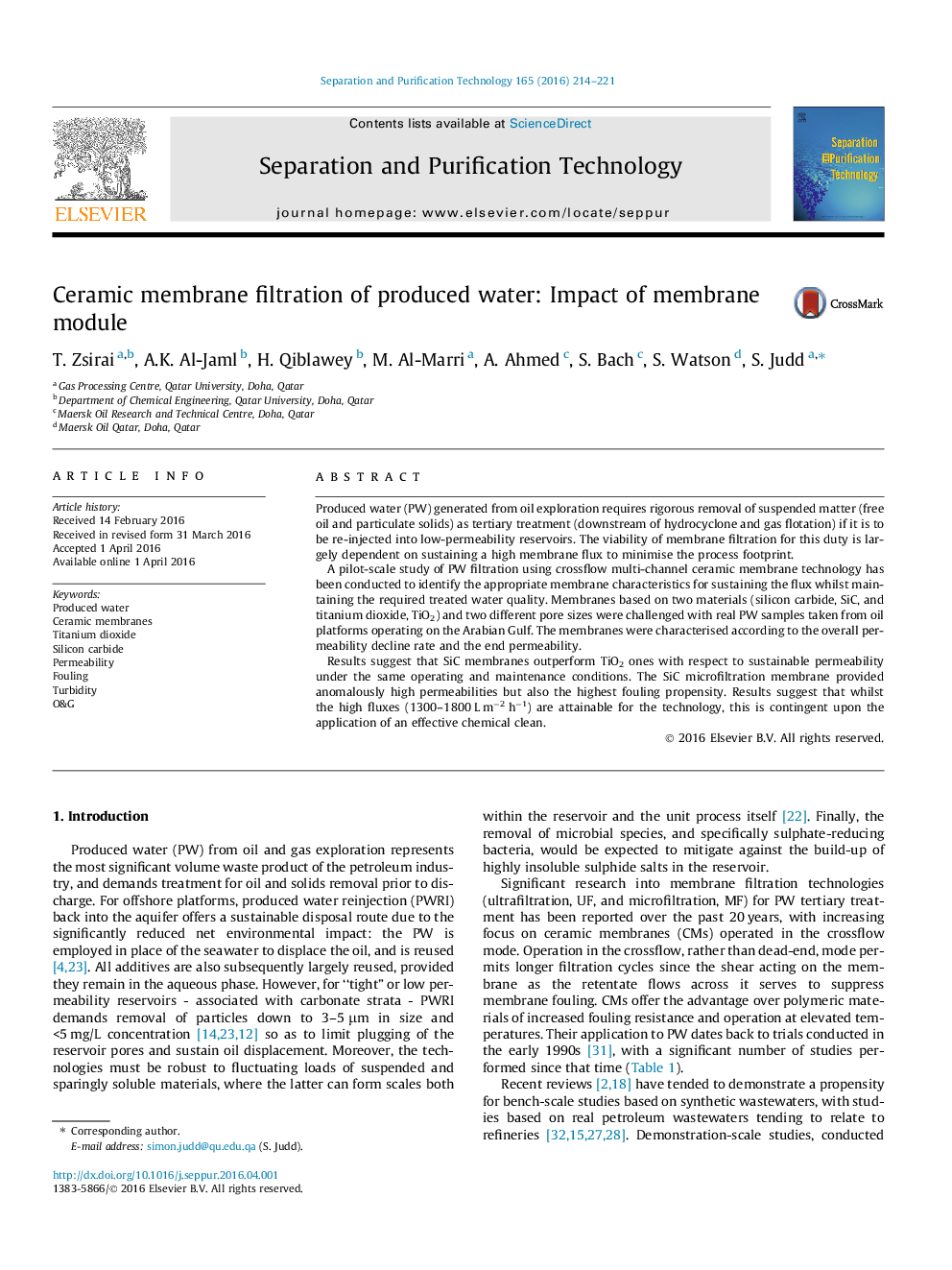| Article ID | Journal | Published Year | Pages | File Type |
|---|---|---|---|---|
| 639986 | Separation and Purification Technology | 2016 | 8 Pages |
•Pilot-scale testing of ceramic membranes challenged with produced water conducted.•Two materials (silicon carbide, SiC, titanium dioxide, TiO2) at two pore sizes tested.•Permeability decline rate follows cubic relationship with final permeability.•SiC membranes outperform TiO2 ones with respect to sustainable permeability.•Highest fluxes and fouling rates measured for SiC microfiltration membrane.
Produced water (PW) generated from oil exploration requires rigorous removal of suspended matter (free oil and particulate solids) as tertiary treatment (downstream of hydrocyclone and gas flotation) if it is to be re-injected into low-permeability reservoirs. The viability of membrane filtration for this duty is largely dependent on sustaining a high membrane flux to minimise the process footprint.A pilot-scale study of PW filtration using crossflow multi-channel ceramic membrane technology has been conducted to identify the appropriate membrane characteristics for sustaining the flux whilst maintaining the required treated water quality. Membranes based on two materials (silicon carbide, SiC, and titanium dioxide, TiO2) and two different pore sizes were challenged with real PW samples taken from oil platforms operating on the Arabian Gulf. The membranes were characterised according to the overall permeability decline rate and the end permeability.Results suggest that SiC membranes outperform TiO2 ones with respect to sustainable permeability under the same operating and maintenance conditions. The SiC microfiltration membrane provided anomalously high permeabilities but also the highest fouling propensity. Results suggest that whilst the high fluxes (1300–1800 L m−2 h−1) are attainable for the technology, this is contingent upon the application of an effective chemical clean.
